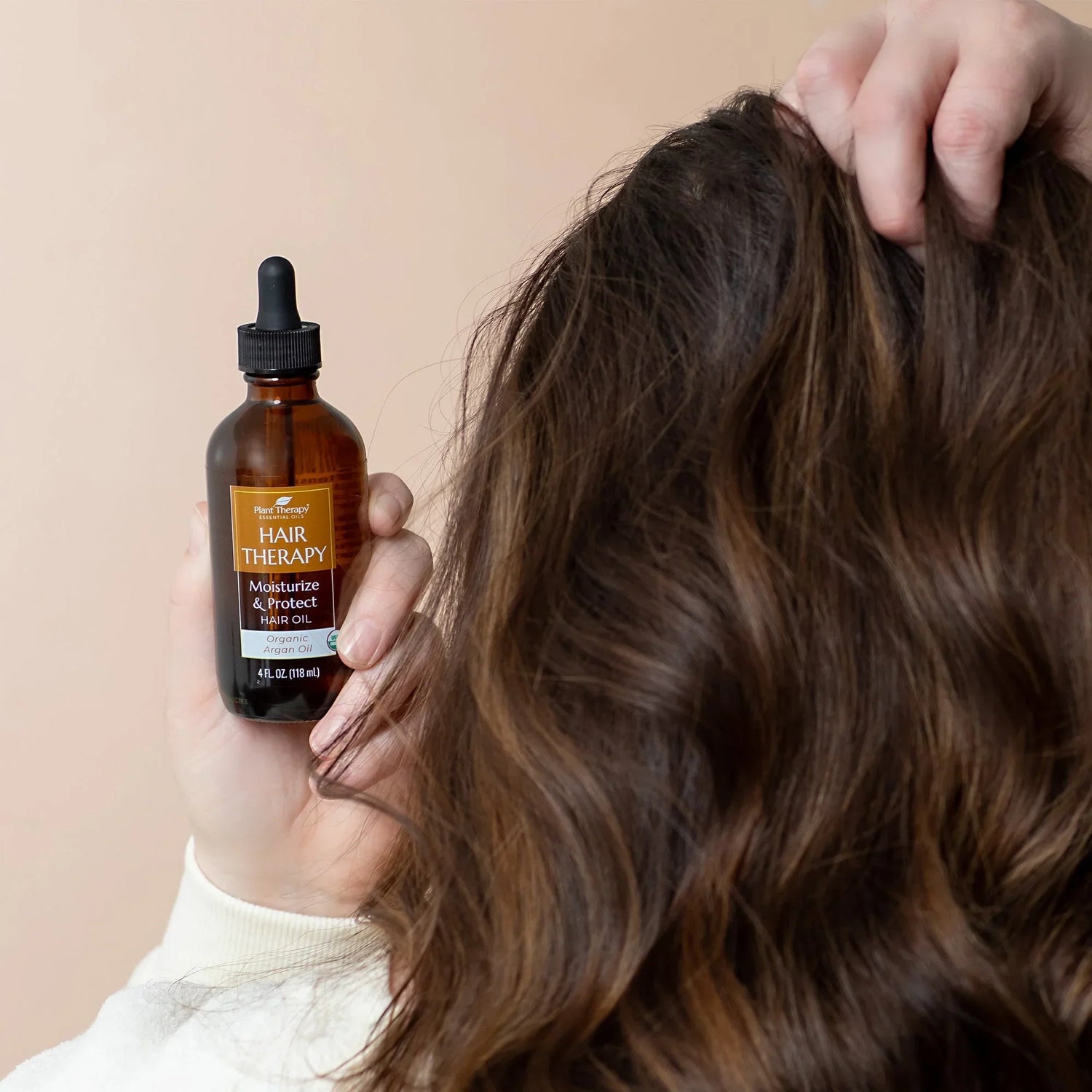Is This Common Supply Concern Keeping You Up More Than Baby?
(Bonus: Free Supply Survival Guide)
If you’ve Googled “How to increase my milk supply?” more times than you can count, you’re not alone. The thought of having low breast-milk supply is a common concern among pumping moms, and it can be a source of major stress for many.
I know, because I’ve been there. When I was exclusively pumping for my first daughter, at times it felt like the pressure and stress to pump a certain amount per day completely consumed my life. I was a woman possessed, tracking how much milk I pumped each session and I drank water by the bucketfuls like it was going out of style.
Just when baby was finally asleep at night, I’d get myself up by alarm, trying not to lay flat while half-asleep and accidentally dump my milk, while I fit in an extra pump session out of concern for keeping up supply. And when I would reach into my stash of milk in the freezer each morning to send off with the kiddo, I felt both a sense of pride for what I pumped and serious anxiety for using up what I had left.

While scrolling through your Facebook Groups for pumping moms or stalking random message boards in search of supply-boosting secrets, you’ve likely seen pictures of deep freezers jam-packed with what looks like a lifetime supply of breast milk and freshly-pumped bottles overflowing with the good stuff. Some days, it’s enough to make you feel like you should just go ahead hang up your pump for good.
Certified lactation consultant Brianne Griffis is here to help us all sleep a little easier. As a mom of two who exclusively pumped for one of her kids, she’s determined to dispel some common misconceptions that are causing moms serious stress.
“You don’t need a deep freezer full of milk,” Brianne says. That level of milk production, she says, is most definitely the exception and not the norm. As with anything in life, it’s easy to fall into the comparison trap. But personally, I’ve always believed that when you understand how something works, it’s easier to understand what you can and can’t control. That is--if you want to increase (or decrease) your milk supply, you kind of have to know what makes it work in the first place and go from there. So first, let’s get on the same page about how this milk business actually happens, shall we?
What Happens Before You’re Pregnant
Here’s an out-of-this-world fun fact: Your body’s been getting ready for pregnancy since your mom was 6 weeks pregnancy with you. By the time you were born, your main milk ducts – think of it as a mini highway system that transports your milk through your breasts – had already formed. Pretty crazy, right?
Your breasts are made up of tissue, milk-producing glands (a.k.a. mammary glands), and protective fat. Until puberty, these glands just kind of fly under the radar, not doing much of anything. During puberty, estrogen makes them grow.
While You’re Pregnant
Once you’re pregnant, BAM. That glandular tissue receives its cue and really kicks into high gear, which is the reason you probably had to go out and buy new, bigger bras. A hormone called prolactin helps your body turn nutrients (protein and sugars) from your blood supply into breast milk. So during pregnancy and through the first few days after you give birth, milk production is driven purely by hormones.

Once Your Baby’s Here
Soon after childbirth, your prolactin levels rise, telling your glands to make lots of milk. Within 2-4 days, your milk will typically “come in,” as they say. Once your milk is in, supply and demand is what starts to drive your milk supply.
Here’s a super easy way to think of it: La Leche League compares it to how an automatic ice maker works. As the ice bin empties, the machine knows to make more ice to fill it back up to the top. Similarly, every time you pump or breastfeed, your body sends a signal to make more milk. The more frequently you pump, the more frequently your body will go into milk-making mode.
So How Much Milk Should You Be Making?
As with everything, there’s no black and white answer for this. However, according to breastfeeding experts, including Brianne Griffis, a breastmilk output of 1 ounce per hour is absolutely “normal.” So if you’re pumping 2-3 ounces every 2-3 hours, your supply isn’t considered low, medically speaking.
Now for the million dollar question: What can you do to maintain and increase your supply?
Brianne and I have a lot to say on this subject--so much in fact, that we created A Supply Survival Guide for you. It’s totally free and you can grab it right here.

Download and print your FREE Supply Survival Guide now!
In this guide you’ll find:
Get your Supply Survival Guide Here!






59 comments
http://images.google.tl/url?q=Http://theisland360.com/blog-112/keto-control-reviews/
http://maps.google.tl/url?q=Http://theisland360.com/blog-112/keto-control-reviews/
http://maps.google.td/url?q=Http://theisland360.com/blog-112/keto-control-reviews/
http://www.google.td/url?q=Http://theisland360.com/blog-112/keto-control-reviews/
http://www.google.cf/url?q=Http://theisland360.com/blog-112/keto-control-reviews/
lstiles135@gmail.com.
https://opviewer.com/ 8/31/22
http://www.erotikplatz.at/redirect.php?id=939&mode=fuhrer&url=https://opviewer.com
http://www.imsnet.at/LangChange.aspx?uri=https://opviewer.com
https://www.kath-kirche-kaernten.at/pfarren/pfarre/C3014?URL=https://opviewer.com
http://gs.matzendorf.at/includes/linkaufruf.asp?art=kapitel&link=https://opviewer.com
http://www.nuttenzone.at/jump.php?url=https://opviewer.com
https://cms.oeav-events.at/wGlobal/nessyEDVapps/layout/fancybox.php?link=https://opviewer.com
https://www.oebb.at/nightjet_newsletter/tc/xxxx?url=https://opviewer.com
https://www.gardensonline.com.au/Global/Players/YouTube.aspx?VideoURL=https://opviewer.com
http://www2.golflink.com.au/out.aspx?frm=gglcmicrosite&target=https://opviewer.com
http://www2.golflink.com.au/out.aspx?frm=logo&target=https://opviewer.com
https://www.golfselect.com.au/redirect?activityType_cd=WEB-LINK&course_id=2568&tgturl=https://opviewer.com
https://www.malcolmturnbull.com.au/?URL=https://opviewer.com
http://march-hare.com.au/library/default.asp?PP=/library/toc/lib-12.xml&tocPath=&URL=https://https://opviewer.com
https://www.oliverhume.com.au/enquiry/thank-you/?redirectTo=https://opviewer.com
http://www.parents-guide-illawarra.com.au/Redirect.aspx?destination=https://https://opviewer.com
https://ramset.com.au/Document/Url/?url=https://opviewer.com
https://ramset.com.au/document/url/?url=https://opviewer.com
http://rubyconnection.com.au/umbraco/newsletterstudio/tracking/trackclick.aspx?url=https://opviewer.com
http://southburnett.com.au/movies/movie.php?url=https://opviewer.com
https://www.vicsport.com.au/analytics/outbound?url=https://opviewer.com
https://www.vwwatercooled.com.au/forums/redirect-to/?redirect=https://https://opviewer.com
http://clients3.weblink.com.au/clients/aluminalimited/priceframe1.aspx?link=https://opviewer.com
https://maps.google.lt/url?sa=t&url=https://opviewer.com
https://ref.gamer.com.tw/redir.php?url=https://opviewer.com
https://images.google.com.sa/url?sa=t&url=https://opviewer.com
https://maps.google.com.sa/url?sa=t&url=https://opviewer.com
https://www.google.com.sa/url?sa=t&url=https://opviewer.com
https://images.google.hr/url?sa=t&url=https://opviewer.com
https://www.google.hr/url?sa=t&url=https://opviewer.com
https://maps.google.hr/url?sa=t&url=https://opviewer.com
https://images.google.com.pe/url?sa=t&url=https://opviewer.com
https://www.google.com.pe/url?sa=t&url=https://opviewer.com
https://maps.google.ae/url?sa=t&url=https://opviewer.com
https://images.google.ae/url?sa=t&url=https://opviewer.com
https://www.google.ae/url?sa=t&url=https://opviewer.com
https://www.google.co.ve/url?sa=t&url=https://opviewer.com
https://maps.google.co.ve/url?sa=t&url=https://opviewer.com
https://images.google.co.ve/url?sa=t&url=https://opviewer.com
http://onlinemanuals.txdot.gov/help/urlstatusgo.html?url=https://opviewer.com
https://www.google.com.pk/url?sa=t&url=https://opviewer.com
https://images.google.com.pk/url?sa=t&url=https://opviewer.com
https://community.rsa.com/t5/custom/page/page-id/ExternalRedirect?url=https://opviewer.com
https://www.google.com.eg/url?sa=t&url=https://opviewer.com
https://maps.google.com.eg/url?sa=t&url=https://opviewer.com
https://images.google.com.eg/url?sa=t&url=https://opviewer.com
https://www.google.si/url?sa=t&url=https://opviewer.com
https://maps.google.si/url?sa=t&url=https://opviewer.com
https://images.google.si/url?sa=t&url=https://opviewer.com
http://www.pickyourown.org/articles.php?NAME=Visit+Us&URL=https://opviewer.com
https://maps.google.lv/url?sa=t&url=https://opviewer.com
https://www.google.lv/url?sa=t&url=https://opviewer.com
https://images.google.lv/url?sa=t&url=https://opviewer.com
https://community.cypress.com/t5/custom/page/page-id/ExternalRedirect?url=https://opviewer.com
https://www.google.ee/url?sa=t&url=https://opviewer.com
https://cms.oeav-events.at/wGlobal/nessyEDVapps/layout/fancybox.php?link=https://opviewer.com
https://www.oebb.at/nightjet_newsletter/tc/xxxx?url=https://opviewer.com
https://www.gardensonline.com.au/Global/Players/YouTube.aspx?VideoURL=https://opviewer.com
http://www2.golflink.com.au/out.aspx?frm=gglcmicrosite&target=https://opviewer.com
http://www2.golflink.com.au/out.aspx?frm=logo&target=https://opviewer.com
https://www.golfselect.com.au/redirect?activityType_cd=WEB-LINK&courseid=2568&tgturl=https://opviewer.com
https://www.malcolmturnbull.com.au/?URL=https://opviewer.com
http://march-hare.com.au/library/default.asp?PP=/library/toc/lib-12.xml&tocPath=&URL=https://https://opviewer.com
https://www.oliverhume.com.au/enquiry/thank-you/?redirectTo=https://opviewer.com
http://www.parents-guide-illawarra.com.au/Redirect.aspx?destination=https://https://opviewer.com
https://ramset.com.au/Document/Url/?url=https://opviewer.com
https://ramset.com.au/document/url/?url=https://opviewer.com
http://rubyconnection.com.au/umbraco/newsletterstudio/tracking/trackclick.aspx?url=https://opviewer.com
http://southburnett.com.au/movies/movie.php?url=https://opviewer.com
https://www.vicsport.com.au/analytics/outbound?url=https://opviewer.com
https://www.vwwatercooled.com.au/forums/redirect-to/?redirect=https://https://opviewer.com
http://clients3.weblink.com.au/clients/aluminalimited/priceframe1.aspx?link=https://opviewer.com
https://clients1.google.ad/url?q=https://opviewer.com
https://cse.google.ad/url?q=https://opviewer.com
https://images.google.ad/url?q=https://opviewer.com
https://maps.google.ad/url?q=https://opviewer.com
https://www.google.ad/url?q=https://opviewer.com
https://emaratyah.ae/new-redirect.php?w=https://opviewer.com
http://mbrf.ae/knowledgeaward/language/ar/?redirecturl=https://opviewer.com
http://rafco.ae/container.asp?url=https://opviewer.com
http://for-css.ucoz.ae/go?https://opviewer.com
https://clients1.google.com.af/url?q=https://opviewer.com
https://cse.google.com.af/url?q=https://opviewer.com
https://images.google.com.af/url?q=https://opviewer.com
http://toolbarqueries.google.com.af/url?sa=t&url=https://opviewer.com
https://www.google.com.af/url?q=https://opviewer.com
https://www.snek.ai/redirect?url=https://opviewer.com
http://www.torrent.ai/lt/redirect.php?url=https://opviewer.com
http://avto.al/az/home/redirect?carId=1639612&url=https://opviewer.com
https://clients1.google.al/url?q=https://opviewer.com
https://cse.google.al/url?q=https://opviewer.com
https://images.google.al/url?q=https://opviewer.com
https://images.google.al/url?q=https://opviewer.com
http://toolbarqueries.google.al/url?q=https://opviewer.com
https://www.google.al/url?q=https://opviewer.com
http://tido.al/vazhdo.php?url=https://opviewer.com
http://smile.wjp.am/link-free/link3.cgi?mode=cnt&no=8&hpurl=https://opviewer.com
https://oxleys.app/friends.php?q=https://opviewer.com
http://www.ain.com.ar/openpop.php?url=https://opviewer.com
http://www.ain.com.ar/openpop.php?url=https://opviewer.com
https://www.google.nl/url?sa=t&url=https://massage2003.blogspot.com/2022/08/instructions-to-massage-for.html
https://www.google.mw/url?sa=t&url=https://massage2003.blogspot.com/2022/08/instructions-to-massage-for.html
https://www.google.mv/url?sa=t&url=https://massage2003.blogspot.com/2022/08/instructions-to-massage-for.html
https://www.google.mu/url?sa=t&url=https://massage2003.blogspot.com/2022/08/instructions-to-massage-for.html
https://www.google.ms/url?sa=t&url=https://massage2003.blogspot.com/2022/08/instructions-to-massage-for.html
https://www.google.mn/url?sa=t&url=https://massage2003.blogspot.com/2022/08/instructions-to-massage-for.html
https://www.google.mk/url?sa=t&url=https://massage2003.blogspot.com/2022/08/instructions-to-massage-for.html
https://www.google.mg/url?sa=t&url=https://massage2003.blogspot.com/2022/08/instructions-to-massage-for.html
https://www.google.me/url?sa=t&url=https://massage2003.blogspot.com/2022/08/instructions-to-massage-for.html
https://www.google.md/url?sa=t&url=https://massage2003.blogspot.com/2022/08/instructions-to-massage-for.html
https://www.google.lv/url?sa=t&url=https://massage2003.blogspot.com/2022/08/instructions-to-massage-for.html
https://www.google.lu/url?sa=t&url=https://massage2003.blogspot.com/2022/08/instructions-to-massage-for.html
https://www.google.lt/url?sa=t&url=https://massage2003.blogspot.com/2022/08/instructions-to-massage-for.html
https://www.google.lk/url?sa=t&url=https://massage2003.blogspot.com/2022/08/instructions-to-massage-for.html
https://www.google.li/url?sa=t&url=https://massage2003.blogspot.com/2022/08/instructions-to-massage-for.html
https://www.google.la/url?sa=t&url=https://massage2003.blogspot.com/2022/08/instructions-to-massage-for.html
https://www.google.kz/url?sa=t&url=https://massage2003.blogspot.com/2022/08/instructions-to-massage-for.html
https://www.google.kg/url?sa=t&url=https://massage2003.blogspot.com/2022/08/instructions-to-massage-for.html
https://www.google.jo/url?sa=t&url=https://massage2003.blogspot.com/2022/08/instructions-to-massage-for.html
https://www.google.je/url?sa=t&url=https://massage2003.blogspot.com/2022/08/instructions-to-massage-for.html
https://www.google.it/url?sa=t&url=https://massage2003.blogspot.com/2022/08/instructions-to-massage-for.html
https://www.google.is/url?sa=t&url=https://massage2003.blogspot.com/2022/08/instructions-to-massage-for.html
https://www.google.iq/url?sa=t&url=https://massage2003.blogspot.com/2022/08/instructions-to-massage-for.html
https://www.google.ie/url?sa=t&url=https://massage2003.blogspot.com/2022/08/instructions-to-massage-for.html
https://www.google.hu/url?sa=t&url=https://massage2003.blogspot.com/2022/08/instructions-to-massage-for.html
https://www.google.ht/url?sa=t&url=https://massage2003.blogspot.com/2022/08/instructions-to-massage-for.html
https://www.google.hr/url?sa=t&url=https://massage2003.blogspot.com/2022/08/instructions-to-massage-for.html
https://www.google.hn/url?sa=t&url=https://massage2003.blogspot.com/2022/08/instructions-to-massage-for.html
https://www.google.gr/url?sa=t&url=https://massage2003.blogspot.com/2022/08/instructions-to-massage-for.html
https://www.google.gp/url?sa=t&url=https://massage2003.blogspot.com/2022/08/instructions-to-massage-for.html
https://www.google.gm/url?sa=t&url=https://massage2003.blogspot.com/2022/08/instructions-to-massage-for.html
https://www.google.gl/url?sa=t&url=https://massage2003.blogspot.com/2022/08/instructions-to-massage-for.html
https://www.google.gg/url?sa=t&url=https://massage2003.blogspot.com/2022/08/instructions-to-massage-for.html
https://www.google.ge/url?sa=t&url=https://massage2003.blogspot.com/2022/08/instructions-to-massage-for.html
https://www.google.fr/url?sa=t&url=https://massage2003.blogspot.com/2022/08/instructions-to-massage-for.html
https://www.google.fm/url?sa=t&url=https://massage2003.blogspot.com/2022/08/instructions-to-massage-for.html
https://www.google.fi/url?sa=t&url=https://massage2003.blogspot.com/2022/08/instructions-to-massage-for.html
https://www.google.es/url?sa=t&url=https://massage2003.blogspot.com/2022/08/instructions-to-massage-for.html
https://www.google.ee/url?sa=t&url=https://massage2003.blogspot.com/2022/08/instructions-to-massage-for.html
https://www.google.dz/url?sa=t&url=https://massage2003.blogspot.com/2022/08/instructions-to-massage-for.html
https://www.google.dk/url?sa=t&url=https://massage2003.blogspot.com/2022/08/instructions-to-massage-for.html
https://www.google.dj/url?sa=t&url=https://massage2003.blogspot.com/2022/08/instructions-to-massage-for.html
https://www.google.de/url?sa=t&url=https://massage2003.blogspot.com/2022/08/instructions-to-massage-for.html
https://www.google.cz/url?sa=t&url=https://massage2003.blogspot.com/2022/08/instructions-to-massage-for.html
https://www.google.com/url?sa=t&url=https://massage2003.blogspot.com/2022/08/instructions-to-massage-for.html
https://www.google.com.vn/url?sa=t&url=https://massage2003.blogspot.com/2022/08/instructions-to-massage-for.html
https://www.google.com.uy/url?sa=t&url=https://massage2003.blogspot.com/2022/08/instructions-to-massage-for.html
https://www.google.com.ua/url?sa=t&url=https://massage2003.blogspot.com/2022/08/instructions-to-massage-for.html
https://www.google.com.tw/url?sa=t&url=https://massage2003.blogspot.com/2022/08/instructions-to-massage-for.html
https://www.google.com.tr/url?sa=t&url=https://massage2003.blogspot.com/2022/08/instructions-to-massage-for.html
https://www.google.com.sv/url?sa=t&url=https://massage2003.blogspot.com/2022/08/instructions-to-massage-for.html
https://www.google.com.sg/url?sa=t&url=https://massage2003.blogspot.com/2022/08/instructions-to-massage-for.html
https://www.google.com.sa/url?sa=t&url=https://massage2003.blogspot.com/2022/08/instructions-to-massage-for.html
https://www.google.com.qa/url?sa=t&url=https://massage2003.blogspot.com/2022/08/instructions-to-massage-for.html
https://www.google.com.py/url?sa=t&url=https://massage2003.blogspot.com/2022/08/instructions-to-massage-for.html
https://www.google.com.pr/url?sa=t&url=https://massage2003.blogspot.com/2022/08/instructions-to-massage-for.html
https://www.google.com.pk/url?sa=t&url=https://massage2003.blogspot.com/2022/08/instructions-to-massage-for.html
https://www.google.com.ph/url?sa=t&url=https://massage2003.blogspot.com/2022/08/instructions-to-massage-for.html
https://www.google.com.pe/url?sa=t&url=https://massage2003.blogspot.com/2022/08/instructions-to-massage-for.html
https://www.google.com.pa/url?sa=t&url=https://massage2003.blogspot.com/2022/08/instructions-to-massage-for.html
https://www.google.com.om/url?sa=t&url=https://massage2003.blogspot.com/2022/08/instructions-to-massage-for.html
https://www.google.com.ni/url?sa=t&url=https://massage2003.blogspot.com/2022/08/instructions-to-massage-for.html
https://www.google.com.ng/url?sa=t&url=https://massage2003.blogspot.com/2022/08/instructions-to-massage-for.html
https://www.google.com.na/url?sa=t&url=https://massage2003.blogspot.com/2022/08/instructions-to-massage-for.html
https://www.google.com.mz/url?sa=t&url=https://massage2003.blogspot.com/2022/08/instructions-to-massage-for.html
https://www.google.com.my/url?sa=t&url=https://massage2003.blogspot.com/2022/08/instructions-to-massage-for.html
https://www.google.com.mx/url?sa=t&url=https://massage2003.blogspot.com/2022/08/instructions-to-massage-for.html
https://www.google.com.mt/url?sa=t&url=https://massage2003.blogspot.com/2022/08/instructions-to-massage-for.html
https://www.google.com.ly/url?sa=t&url=https://massage2003.blogspot.com/2022/08/instructions-to-massage-for.html
https://www.google.com.lb/url?sa=t&url=https://massage2003.blogspot.com/2022/08/instructions-to-massage-for.html
https://www.google.com.kw/url?sa=t&url=https://massage2003.blogspot.com/2022/08/instructions-to-massage-for.html
https://www.google.com.kh/url?sa=t&url=https://massage2003.blogspot.com/2022/08/instructions-to-massage-for.html
https://www.google.com.jm/url?sa=t&url=https://massage2003.blogspot.com/2022/08/instructions-to-massage-for.html
https://www.google.com.hk/url?sa=t&url=https://massage2003.blogspot.com/2022/08/instructions-to-massage-for.html
https://www.google.com.gt/url?sa=t&url=https://massage2003.blogspot.com/2022/08/instructions-to-massage-for.html
https://www.google.com.gi/url?sa=t&url=https://massage2003.blogspot.com/2022/08/instructions-to-massage-for.html
https://www.google.com.gh/url?sa=t&url=https://massage2003.blogspot.com/2022/08/instructions-to-massage-for.html
https://www.google.com.fj/url?sa=t&url=https://massage2003.blogspot.com/2022/08/instructions-to-massage-for.html
https://www.google.com.et/url?sa=t&url=https://massage2003.blogspot.com/2022/08/instructions-to-massage-for.html
https://www.google.com.eg/url?sa=t&url=https://massage2003.blogspot.com/2022/08/instructions-to-massage-for.html
https://www.google.com.ec/url?sa=t&url=https://massage2003.blogspot.com/2022/08/instructions-to-massage-for.html
https://www.google.com.do/url?sa=t&url=https://massage2003.blogspot.com/2022/08/instructions-to-massage-for.html
https://www.google.com.cy/url?sa=t&url=https://massage2003.blogspot.com/2022/08/instructions-to-massage-for.html
https://www.google.com.cu/url?sa=t&url=https://massage2003.blogspot.com/2022/08/instructions-to-massage-for.html
https://www.google.com.co/url?sa=t&url=https://massage2003.blogspot.com/2022/08/instructions-to-massage-for.html
https://www.google.com.bz/url?sa=t&url=https://massage2003.blogspot.com/2022/08/instructions-to-massage-for.html
https://www.google.com.br/url?sa=t&url=https://massage2003.blogspot.com/2022/08/instructions-to-massage-for.html
https://www.google.com.bo/url?sa=t&url=https://massage2003.blogspot.com/2022/08/instructions-to-massage-for.html
https://www.google.com.bn/url?sa=t&url=https://massage2003.blogspot.com/2022/08/instructions-to-massage-for.html
https://www.google.com.bh/url?sa=t&url=https://massage2003.blogspot.com/2022/08/instructions-to-massage-for.html
https://www.google.com.bd/url?sa=t&url=https://massage2003.blogspot.com/2022/08/instructions-to-massage-for.html
https://www.google.com.au/url?sa=t&url=https://massage2003.blogspot.com/2022/08/instructions-to-massage-for.html
https://www.google.com.ar/url?sa=t&url=https://massage2003.blogspot.com/2022/08/instructions-to-massage-for.html
https://www.google.com.ag/url?sa=t&url=https://massage2003.blogspot.com/2022/08/instructions-to-massage-for.html
https://www.google.com.af/url?sa=t&url=https://massage2003.blogspot.com/2022/08/instructions-to-massage-for.html
https://www.google.co.za/url?sa=t&url=https://massage2003.blogspot.com/2022/08/instructions-to-massage-for.html
https://www.google.co.ve/url?sa=t&url=https://massage2003.blogspot.com/2022/08/instructions-to-massage-for.html
https://www.google.co.uk/url?sa=t&url=https://massage2003.blogspot.com/2022/08/instructions-to-massage-for.html
https://www.google.co.ug/url?sa=t&url=https://massage2003.blogspot.com/2022/08/instructions-to-massage-for.html
https://www.google.co.tz/url?sa=t&url=https://massage2003.blogspot.com/2022/08/instructions-to-massage-for.html
https://www.google.co.th/url?sa=t&url=https://massage2003.blogspot.com/2022/08/instructions-to-massage-for.html
https://www.google.co.nz/url?sa=t&url=https://massage2003.blogspot.com/2022/08/instructions-to-massage-for.html
https://www.google.co.ma/url?sa=t&url=https://massage2003.blogspot.com/2022/08/instructions-to-massage-for.html
https://www.google.co.ls/url?sa=t&url=https://massage2003.blogspot.com/2022/08/instructions-to-massage-for.html
https://www.google.co.kr/url?sa=t&url=https://massage2003.blogspot.com/2022/08/instructions-to-massage-for.html
https://www.google.co.ke/url?sa=t&url=https://massage2003.blogspot.com/2022/08/instructions-to-massage-for.html
https://www.google.co.jp/url?sa=t&url=https://massage2003.blogspot.com/2022/08/instructions-to-massage-for.html
https://www.google.co.in/url?sa=t&url=https://massage2003.blogspot.com/2022/08/instructions-to-massage-for.html
https://www.google.co.il/url?sa=t&url=https://massage2003.blogspot.com/2022/08/instructions-to-massage-for.html
https://www.google.co.id/url?sa=t&url=https://massage2003.blogspot.com/2022/08/instructions-to-massage-for.html
https://www.google.co.cr/url?sa=t&url=https://massage2003.blogspot.com/2022/08/instructions-to-massage-for.html
https://www.google.co.bw/url?sa=t&url=https://massage2003.blogspot.com/2022/08/instructions-to-massage-for.html
https://www.google.cm/url?sa=t&url=https://massage2003.blogspot.com/2022/08/instructions-to-massage-for.html
https://www.google.cl/url?sa=t&url=https://massage2003.blogspot.com/2022/08/instructions-to-massage-for.html
https://www.google.ci/url?sa=t&url=https://massage2003.blogspot.com/2022/08/instructions-to-massage-for.html
https://www.google.ch/url?sa=t&url=https://massage2003.blogspot.com/2022/08/instructions-to-massage-for.html
https://www.google.cd/url?sa=t&url=https://massage2003.blogspot.com/2022/08/instructions-to-massage-for.html
https://www.google.cat/url?sa=t&url=https://massage2003.blogspot.com/2022/08/instructions-to-massage-for.html
https://www.google.ca/url?sa=t&url=https://massage2003.blogspot.com/2022/08/instructions-to-massage-for.html
https://www.google.by/url?sa=t&url=https://massage2003.blogspot.com/2022/08/instructions-to-massage-for.html
https://www.google.bs/url?sa=t&url=https://massage2003.blogspot.com/2022/08/instructions-to-massage-for.html
https://www.google.bi/url?sa=t&url=https://massage2003.blogspot.com/2022/08/instructions-to-massage-for.html
https://www.google.bg/url?sa=t&url=https://massage2003.blogspot.com/2022/08/instructions-to-massage-for.html
https://www.google.bf/url?sa=t&url=https://massage2003.blogspot.com/2022/08/instructions-to-massage-for.html
https://www.google.be/url?sa=t&url=https://massage2003.blogspot.com/2022/08/instructions-to-massage-for.html
https://www.google.ba/url?sa=t&url=https://massage2003.blogspot.com/2022/08/instructions-to-massage-for.html
https://www.google.az/url?sa=t&url=https://massage2003.blogspot.com/2022/08/instructions-to-massage-for.html
https://www.google.at/url?sa=t&url=https://massage2003.blogspot.com/2022/08/instructions-to-massage-for.html
https://www.google.as/url?sa=t&url=https://massage2003.blogspot.com/2022/08/instructions-to-massage-for.html
https://www.google.am/url?sa=t&url=https://massage2003.blogspot.com/2022/08/instructions-to-massage-for.html
https://www.google.al/url?sa=t&url=https://massage2003.blogspot.com/2022/08/instructions-to-massage-for.html
https://www.google.ae/url?sa=t&url=https://massage2003.blogspot.com/2022/08/instructions-to-massage-for.html
https://www.google.ad/url?sa=t&url=https://massage2003.blogspot.com/2022/08/instructions-to-massage-for.html
https://plus.google.com/url?q=https://massage2003.blogspot.com/2022/08/instructions-to-massage-for.html
https://maps.google.tn/url?sa=t&url=https://massage2003.blogspot.com/2022/08/instructions-to-massage-for.html
https://maps.google.sn/url?sa=t&url=https://massage2003.blogspot.com/2022/08/instructions-to-massage-for.html
https://maps.google.sk/url?sa=t&url=https://massage2003.blogspot.com/2022/08/instructions-to-massage-for.html
https://maps.google.si/url?sa=t&url=https://massage2003.blogspot.com/2022/08/instructions-to-massage-for.html
https://maps.google.sh/url?sa=t&url=https://massage2003.blogspot.com/2022/08/instructions-to-massage-for.html
https://maps.google.se/url?sa=t&url=https://massage2003.blogspot.com/2022/08/instructions-to-massage-for.html
https://maps.google.rw/url?sa=t&url=https://massage2003.blogspot.com/2022/08/instructions-to-massage-for.html
https://maps.google.ru/url?sa=t&url=https://massage2003.blogspot.com/2022/08/instructions-to-massage-for.html
https://maps.google.rs/url?sa=t&url=https://massage2003.blogspot.com/2022/08/instructions-to-massage-for.html
https://maps.google.ro/url?sa=t&url=https://massage2003.blogspot.com/2022/08/instructions-to-massage-for.html
https://maps.google.pt/url?sa=t&url=https://massage2003.blogspot.com/2022/08/instructions-to-massage-for.html
https://maps.google.pl/url?sa=t&url=https://massage2003.blogspot.com/2022/08/instructions-to-massage-for.html
https://maps.google.no/url?sa=t&url=https://massage2003.blogspot.com/2022/08/instructions-to-massage-for.html
https://maps.google.nl/url?sa=t&url=https://massage2003.blogspot.com/2022/08/instructions-to-massage-for.html
https://maps.google.mw/url?sa=t&url=https://massage2003.blogspot.com/2022/08/instructions-to-massage-for.html
https://maps.google.mv/url?sa=t&url=https://massage2003.blogspot.com/2022/08/instructions-to-massage-for.html
https://maps.google.mu/url?sa=t&url=https://massage2003.blogspot.com/2022/08/instructions-to-massage-for.html
https://maps.google.ms/url?sa=t&url=https://massage2003.blogspot.com/2022/08/instructions-to-massage-for.html
https://maps.google.mn/url?sa=t&url=https://massage2003.blogspot.com/2022/08/instructions-to-massage-for.html
https://maps.google.mk/url?sa=t&url=https://massage2003.blogspot.com/2022/08/instructions-to-massage-for.html
https://maps.google.mg/url?sa=t&url=https://massage2003.blogspot.com/2022/08/instructions-to-massage-for.html
https://maps.google.lv/url?sa=t&url=https://massage2003.blogspot.com/2022/08/instructions-to-massage-for.html
https://maps.google.lu/url?sa=t&url=https://massage2003.blogspot.com/2022/08/instructions-to-massage-for.html
https://maps.google.lt/url?sa=t&url=https://massage2003.blogspot.com/2022/08/instructions-to-massage-for.html
https://maps.google.lk/url?sa=t&url=https://massage2003.blogspot.com/2022/08/instructions-to-massage-for.html
https://maps.google.li/url?sa=t&url=https://massage2003.blogspot.com/2022/08/instructions-to-massage-for.html
https://maps.google.la/url?sa=t&url=https://massage2003.blogspot.com/2022/08/instructions-to-massage-for.html
https://maps.google.kz/url?sa=t&url=https://massage2003.blogspot.com/2022/08/instructions-to-massage-for.html
https://maps.google.kg/url?sa=t&url=https://massage2003.blogspot.com/2022/08/instructions-to-massage-for.html
https://maps.google.jo/url?sa=t&url=https://massage2003.blogspot.com/2022/08/instructions-to-massage-for.html
https://maps.google.je/url?sa=t&url=https://massage2003.blogspot.com/2022/08/instructions-to-massage-for.html
https://maps.google.it/url?sa=t&url=https://massage2003.blogspot.com/2022/08/instructions-to-massage-for.html
https://maps.google.is/url?sa=t&url=https://massage2003.blogspot.com/2022/08/instructions-to-massage-for.html
https://maps.google.iq/url?sa=t&url=https://massage2003.blogspot.com/2022/08/instructions-to-massage-for.html
https://maps.google.ie/url?sa=t&url=https://massage2003.blogspot.com/2022/08/instructions-to-massage-for.html
https://maps.google.hu/url?sa=t&url=https://massage2003.blogspot.com/2022/08/instructions-to-massage-for.html
https://maps.google.ht/url?sa=t&url=https://massage2003.blogspot.com/2022/08/instructions-to-massage-for.html
https://maps.google.hr/url?sa=t&url=https://massage2003.blogspot.com/2022/08/instructions-to-massage-for.html
https://maps.google.hn/url?sa=t&url=https://massage2003.blogspot.com/2022/08/instructions-to-massage-for.html
https://maps.google.gr/url?sa=t&url=https://massage2003.blogspot.com/2022/08/instructions-to-massage-for.html
https://maps.google.gm/url?sa=t&url=https://massage2003.blogspot.com/2022/08/instructions-to-massage-for.html
https://maps.google.gl/url?sa=t&url=https://massage2003.blogspot.com/2022/08/instructions-to-massage-for.html
https://maps.google.gg/url?sa=t&url=https://massage2003.blogspot.com/2022/08/instructions-to-massage-for.html
https://maps.google.ge/url?sa=t&url=https://massage2003.blogspot.com/2022/08/instructions-to-massage-for.html
https://maps.google.fr/url?sa=t&url=https://massage2003.blogspot.com/2022/08/instructions-to-massage-for.html
https://maps.google.fm/url?sa=t&url=https://massage2003.blogspot.com/2022/08/instructions-to-massage-for.html
https://maps.google.fi/url?sa=t&url=https://massage2003.blogspot.com/2022/08/instructions-to-massage-for.html
https://maps.google.es/url?sa=t&url=https://massage2003.blogspot.com/2022/08/instructions-to-massage-for.html
https://maps.google.ee/url?sa=t&url=https://massage2003.blogspot.com/2022/08/instructions-to-massage-for.html
https://maps.google.dz/url?sa=t&url=https://massage2003.blogspot.com/2022/08/instructions-to-massage-for.html
https://maps.google.dk/url?sa=t&url=https://massage2003.blogspot.com/2022/08/instructions-to-massage-for.html
https://maps.google.dj/url?sa=t&url=https://massage2003.blogspot.com/2022/08/instructions-to-massage-for.html
https://maps.google.de/url?sa=t&url=https://massage2003.blogspot.com/2022/08/instructions-to-massage-for.html
https://maps.google.cz/url?sa=t&url=https://massage2003.blogspot.com/2022/08/instructions-to-massage-for.html
https://maps.google.com/url?sa=t&url=https://massage2003.blogspot.com/2022/08/instructions-to-massage-for.html
https://maps.google.com.uy/url?sa=t&url=https://massage2003.blogspot.com/2022/08/instructions-to-massage-for.html
https://maps.google.com.ua/url?sa=t&url=https://massage2003.blogspot.com/2022/08/instructions-to-massage-for.html
https://maps.google.com.tw/url?sa=t&url=https://massage2003.blogspot.com/2022/08/instructions-to-massage-for.html
https://maps.google.com.tr/url?sa=t&url=https://massage2003.blogspot.com/2022/08/instructions-to-massage-for.html
https://maps.google.com.sv/url?sa=t&url=https://massage2003.blogspot.com/2022/08/instructions-to-massage-for.html
https://maps.google.com.sg/url?sa=t&url=https://massage2003.blogspot.com/2022/08/instructions-to-massage-for.html
https://maps.google.com.sa/url?sa=t&url=https://massage2003.blogspot.com/2022/08/instructions-to-massage-for.html
https://maps.google.com.qa/url?sa=t&url=https://massage2003.blogspot.com/2022/08/instructions-to-massage-for.html
https://maps.google.com.py/url?sa=t&url=https://massage2003.blogspot.com/2022/08/instructions-to-massage-for.html
https://maps.google.com.pr/url?sa=t&url=https://massage2003.blogspot.com/2022/08/instructions-to-massage-for.html
https://maps.google.com.ph/url?sa=t&url=https://massage2003.blogspot.com/2022/08/instructions-to-massage-for.html
https://maps.google.com.pe/url?sa=t&url=https://massage2003.blogspot.com/2022/08/instructions-to-massage-for.html
https://maps.google.com.pa/url?sa=t&url=https://massage2003.blogspot.com/2022/08/instructions-to-massage-for.html
https://maps.google.com.om/url?sa=t&url=https://massage2003.blogspot.com/2022/08/instructions-to-massage-for.html
https://maps.google.com.ni/url?sa=t&url=https://massage2003.blogspot.com/2022/08/instructions-to-massage-for.html
https://maps.google.com.ng/url?sa=t&url=https://massage2003.blogspot.com/2022/08/instructions-to-massage-for.html
https://maps.google.com.na/url?sa=t&url=https://massage2003.blogspot.com/2022/08/instructions-to-massage-for.html
https://maps.google.com.mz/url?sa=t&url=https://massage2003.blogspot.com/2022/08/instructions-to-massage-for.html
https://maps.google.com.my/url?sa=t&url=https://massage2003.blogspot.com/2022/08/instructions-to-massage-for.html
https://maps.google.com.mx/url?sa=t&url=https://massage2003.blogspot.com/2022/08/instructions-to-massage-for.html
https://maps.google.com.mt/url?sa=t&url=https://massage2003.blogspot.com/2022/08/instructions-to-massage-for.html
https://maps.google.com.ly/url?sa=t&url=https://massage2003.blogspot.com/2022/08/instructions-to-massage-for.html
https://maps.google.com.lb/url?sa=t&url=https://massage2003.blogspot.com/2022/08/instructions-to-massage-for.html
https://maps.google.com.kw/url?sa=t&url=https://massage2003.blogspot.com/2022/08/instructions-to-massage-for.html
https://maps.google.com.kh/url?sa=t&url=https://massage2003.blogspot.com/2022/08/instructions-to-massage-for.html
https://maps.google.com.jm/url?sa=t&url=https://massage2003.blogspot.com/2022/08/instructions-to-massage-for.html
https://maps.google.com.hk/url?sa=t&url=https://massage2003.blogspot.com/2022/08/instructions-to-massage-for.html
https://maps.google.com.gt/url?sa=t&url=https://massage2003.blogspot.com/2022/08/instructions-to-massage-for.html
https://maps.google.com.gi/url?sa=t&url=https://massage2003.blogspot.com/2022/08/instructions-to-massage-for.html
https://maps.google.com.gh/url?sa=t&url=https://massage2003.blogspot.com/2022/08/instructions-to-massage-for.html
https://maps.google.com.fj/url?sa=t&url=https://massage2003.blogspot.com/2022/08/instructions-to-massage-for.html
https://maps.google.com.et/url?sa=t&url=https://massage2003.blogspot.com/2022/08/instructions-to-massage-for.html
https://maps.google.com.eg/url?sa=t&url=https://massage2003.blogspot.com/2022/08/instructions-to-massage-for.html
https://maps.google.com.ec/url?sa=t&url=https://massage2003.blogspot.com/2022/08/instructions-to-massage-for.html
https://maps.google.com.do/url?sa=t&url=https://massage2003.blogspot.com/2022/08/instructions-to-massage-for.html
https://maps.google.com.cu/url?sa=t&url=https://massage2003.blogspot.com/2022/08/instructions-to-massage-for.html
https://maps.google.com.co/url?sa=t&url=https://massage2003.blogspot.com/2022/08/instructions-to-massage-for.html
https://maps.google.com.bz/url?sa=t&url=https://massage2003.blogspot.com/2022/08/instructions-to-massage-for.html
https://maps.google.com.br/url?sa=t&url=https://massage2003.blogspot.com/2022/08/instructions-to-massage-for.html
https://maps.google.com.bo/url?sa=t&url=https://massage2003.blogspot.com/2022/08/instructions-to-massage-for.html
https://maps.google.com.bn/url?sa=t&url=https://massage2003.blogspot.com/2022/08/instructions-to-massage-for.html
https://maps.google.com.bh/url?sa=t&url=https://massage2003.blogspot.com/2022/08/instructions-to-massage-for.html
https://maps.google.com.bd/url?sa=t&url=https://massage2003.blogspot.com/2022/08/instructions-to-massage-for.html
https://maps.google.com.au/url?sa=t&url=https://massage2003.blogspot.com/2022/08/instructions-to-massage-for.html
https://maps.google.com.ar/url?sa=t&url=https://massage2003.blogspot.com/2022/08/instructions-to-massage-for.html
https://maps.google.com.ag/url?sa=t&url=https://massage2003.blogspot.com/2022/08/instructions-to-massage-for.html
https://maps.google.co.za/url?sa=t&url=https://massage2003.blogspot.com/2022/08/instructions-to-massage-for.html
https://maps.google.co.ve/url?sa=t&url=https://massage2003.blogspot.com/2022/08/instructions-to-massage-for.html
https://maps.google.co.uk/url?sa=t&url=https://massage2003.blogspot.com/2022/08/instructions-to-massage-for.html
https://maps.google.co.ug/url?sa=t&url=https://massage2003.blogspot.com/2022/08/instructions-to-massage-for.html
https://maps.google.co.tz/url?sa=t&url=https://massage2003.blogspot.com/2022/08/instructions-to-massage-for.html
https://maps.google.co.th/url?sa=t&url=https://massage2003.blogspot.com/2022/08/instructions-to-massage-for.html
https://maps.google.co.nz/url?sa=t&url=https://massage2003.blogspot.com/2022/08/instructions-to-massage-for.html
https://maps.google.co.ls/url?sa=t&url=https://massage2003.blogspot.com/2022/08/instructions-to-massage-for.html
https://maps.google.co.kr/url?sa=t&url=https://massage2003.blogspot.com/2022/08/instructions-to-massage-for.html
https://maps.google.co.ke/url?sa=t&url=https://massage2003.blogspot.com/2022/08/instructions-to-massage-for.html
https://maps.google.co.jp/url?sa=t&url=https://massage2003.blogspot.com/2022/08/instructions-to-massage-for.html
https://maps.google.co.in/url?sa=t&url=https://massage2003.blogspot.com/2022/08/instructions-to-massage-for.html
https://maps.google.co.il/url?sa=t&url=https://massage2003.blogspot.com/2022/08/instructions-to-massage-for.html
https://maps.google.co.id/url?sa=t&url=https://massage2003.blogspot.com/2022/08/instructions-to-massage-for.html
https://maps.google.co.cr/url?sa=t&url=https://massage2003.blogspot.com/2022/08/instructions-to-massage-for.html
https://maps.google.co.bw/url?sa=t&url=https://massage2003.blogspot.com/2022/08/instructions-to-massage-for.html
https://maps.google.cm/url?sa=t&url=https://massage2003.blogspot.com/2022/08/instructions-to-massage-for.html
https://maps.google.cl/url?sa=t&url=https://massage2003.blogspot.com/2022/08/instructions-to-massage-for.html
https://maps.google.ci/url?sa=t&url=https://massage2003.blogspot.com/2022/08/instructions-to-massage-for.html
https://maps.google.ch/url?sa=t&url=https://massage2003.blogspot.com/2022/08/instructions-to-massage-for.html
https://maps.google.cd/url?sa=t&url=https://massage2003.blogspot.com/2022/08/instructions-to-massage-for.html
https://maps.google.cat/url?sa=t&url=https://massage2003.blogspot.com/2022/08/instructions-to-massage-for.html
https://maps.google.ca/url?sa=t&url=https://massage2003.blogspot.com/2022/08/instructions-to-massage-for.html
https://maps.google.by/url?sa=t&url=https://massage2003.blogspot.com/2022/08/instructions-to-massage-for.html
https://maps.google.bs/url?sa=t&url=https://massage2003.blogspot.com/2022/08/instructions-to-massage-for.html
https://maps.google.bi/url?sa=t&url=https://massage2003.blogspot.com/2022/08/instructions-to-massage-for.html
https://maps.google.bg/url?sa=t&url=https://massage2003.blogspot.com/2022/08/instructions-to-massage-for.html
https://maps.google.bf/url?sa=t&url=https://massage2003.blogspot.com/2022/08/instructions-to-massage-for.html
https://maps.google.be/url?sa=t&url=https://massage2003.blogspot.com/2022/08/instructions-to-massage-for.html
https://maps.google.ba/url?sa=t&url=https://massage2003.blogspot.com/2022/08/instructions-to-massage-for.html
https://maps.google.at/url?sa=t&url=https://massage2003.blogspot.com/2022/08/instructions-to-massage-for.html
https://maps.google.as/url?sa=t&url=https://massage2003.blogspot.com/2022/08/instructions-to-massage-for.html
https://maps.google.ae/url?sa=t&url=https://massage2003.blogspot.com/2022/08/instructions-to-massage-for.html
https://maps.google.ad/url?sa=t&url=https://massage2003.blogspot.com/2022/08/instructions-to-massage-for.html
https://images.google.tn/url?sa=t&url=https://massage2003.blogspot.com/2022/08/instructions-to-massage-for.html
https://images.google.sn/url?sa=t&url=https://massage2003.blogspot.com/2022/08/instructions-to-massage-for.html
https://images.google.sk/url?sa=t&url=https://massage2003.blogspot.com/2022/08/instructions-to-massage-for.html
https://images.google.si/url?sa=t&url=https://massage2003.blogspot.com/2022/08/instructions-to-massage-for.html
https://images.google.sh/url?sa=t&url=https://massage2003.blogspot.com/2022/08/instructions-to-massage-for.html
https://images.google.se/url?sa=t&url=https://massage2003.blogspot.com/2022/08/instructions-to-massage-for.html
https://images.google.rw/url?sa=t&url=https://massage2003.blogspot.com/2022/08/instructions-to-massage-for.html
https://images.google.ru/url?sa=t&url=https://massage2003.blogspot.com/2022/08/instructions-to-massage-for.html
https://images.google.rs/url?sa=t&url=https://massage2003.blogspot.com/2022/08/instructions-to-massage-for.html
https://images.google.ro/url?sa=t&url=https://massage2003.blogspot.com/2022/08/instructions-to-massage-for.html
https://images.google.pt/url?sa=t&url=https://massage2003.blogspot.com/2022/08/instructions-to-massage-for.html
https://images.google.ps/url?sa=t&url=https://massage2003.blogspot.com/2022/08/instructions-to-massage-for.html
https://images.google.pl/url?sa=t&url=https://massage2003.blogspot.com/2022/08/instructions-to-massage-for.html
https://images.google.no/url?sa=t&url=https://massage2003.blogspot.com/2022/08/instructions-to-massage-for.html
https://images.google.nl/url?sa=t&url=https://massage2003.blogspot.com/2022/08/instructions-to-massage-for.html
https://images.google.mw/url?sa=t&url=https://massage2003.blogspot.com/2022/08/instructions-to-massage-for.html
https://images.google.mv/url?sa=t&url=https://massage2003.blogspot.com/2022/08/instructions-to-massage-for.html
https://images.google.mu/url?sa=t&url=https://massage2003.blogspot.com/2022/08/instructions-to-massage-for.html
https://images.google.ms/url?sa=t&url=https://massage2003.blogspot.com/2022/08/instructions-to-massage-for.html
https://images.google.mn/url?sa=t&url=https://massage2003.blogspot.com/2022/08/instructions-to-massage-for.html
https://images.google.mk/url?sa=t&url=https://massage2003.blogspot.com/2022/08/instructions-to-massage-for.html
https://images.google.mg/url?sa=t&url=https://massage2003.blogspot.com/2022/08/instructions-to-massage-for.html
https://images.google.me/url?sa=t&url=https://massage2003.blogspot.com/2022/08/instructions-to-massage-for.html
https://images.google.md/url?sa=t&url=https://massage2003.blogspot.com/2022/08/instructions-to-massage-for.html
https://images.google.lv/url?sa=t&url=https://massage2003.blogspot.com/2022/08/instructions-to-massage-for.html
https://images.google.lu/url?sa=t&url=https://massage2003.blogspot.com/2022/08/instructions-to-massage-for.html
https://images.google.lt/url?sa=t&url=https://massage2003.blogspot.com/2022/08/instructions-to-massage-for.html
https://images.google.lk/url?sa=t&url=https://massage2003.blogspot.com/2022/08/instructions-to-massage-for.html
https://images.google.li/url?sa=t&url=https://massage2003.blogspot.com/2022/08/instructions-to-massage-for.html
https://images.google.la/url?sa=t&url=https://massage2003.blogspot.com/2022/08/instructions-to-massage-for.html
https://images.google.kz/url?sa=t&url=https://massage2003.blogspot.com/2022/08/instructions-to-massage-for.html
https://images.google.kg/url?sa=t&url=https://massage2003.blogspot.com/2022/08/instructions-to-massage-for.html
https://images.google.jo/url?sa=t&url=https://massage2003.blogspot.com/2022/08/instructions-to-massage-for.html
https://images.google.je/url?sa=t&url=https://massage2003.blogspot.com/2022/08/instructions-to-massage-for.html
https://images.google.it/url?sa=t&url=https://massage2003.blogspot.com/2022/08/instructions-to-massage-for.html
https://images.google.is/url?sa=t&url=https://massage2003.blogspot.com/2022/08/instructions-to-massage-for.html
https://images.google.iq/url?sa=t&url=https://massage2003.blogspot.com/2022/08/instructions-to-massage-for.html
https://images.google.ie/url?sa=t&url=https://massage2003.blogspot.com/2022/08/instructions-to-massage-for.html
https://images.google.hu/url?sa=t&url=https://massage2003.blogspot.com/2022/08/instructions-to-massage-for.html
https://images.google.ht/url?sa=t&url=https://massage2003.blogspot.com/2022/08/instructions-to-massage-for.html
https://images.google.hr/url?sa=t&url=https://massage2003.blogspot.com/2022/08/instructions-to-massage-for.html
https://images.google.hn/url?sa=t&url=https://massage2003.blogspot.com/2022/08/instructions-to-massage-for.html
https://images.google.gr/url?sa=t&url=https://massage2003.blogspot.com/2022/08/instructions-to-massage-for.html
https://images.google.gp/url?sa=t&url=https://massage2003.blogspot.com/2022/08/instructions-to-massage-for.html
https://images.google.gm/url?sa=t&url=https://massage2003.blogspot.com/2022/08/instructions-to-massage-for.html
https://images.google.gl/url?sa=t&url=https://massage2003.blogspot.com/2022/08/instructions-to-massage-for.html
https://images.google.gg/url?sa=t&url=https://massage2003.blogspot.com/2022/08/instructions-to-massage-for.html
https://images.google.ge/url?sa=t&url=https://massage2003.blogspot.com/2022/08/instructions-to-massage-for.html
https://images.google.fr/url?sa=t&url=https://massage2003.blogspot.com/2022/08/instructions-to-massage-for.html
https://images.google.fm/url?sa=t&url=https://massage2003.blogspot.com/2022/08/instructions-to-massage-for.html
https://images.google.fi/url?sa=t&url=https://massage2003.blogspot.com/2022/08/instructions-to-massage-for.html
https://images.google.es/url?sa=t&url=https://massage2003.blogspot.com/2022/08/instructions-to-massage-for.html
https://images.google.ee/url?sa=t&url=https://massage2003.blogspot.com/2022/08/instructions-to-massage-for.html
https://images.google.dz/url?sa=t&url=https://massage2003.blogspot.com/2022/08/instructions-to-massage-for.html
https://images.google.dm/url?sa=t&url=https://massage2003.blogspot.com/2022/08/instructions-to-massage-for.html
https://images.google.dk/url?sa=t&url=https://massage2003.blogspot.com/2022/08/instructions-to-massage-for.html
https://images.google.dj/url?sa=t&url=https://massage2003.blogspot.com/2022/08/instructions-to-massage-for.html
https://images.google.de/url?sa=t&url=https://massage2003.blogspot.com/2022/08/instructions-to-massage-for.html
https://images.google.cz/url?sa=t&url=https://massage2003.blogspot.com/2022/08/instructions-to-massage-for.html
https://images.google.com/url?sa=t&url=https://massage2003.blogspot.com/2022/08/instructions-to-massage-for.html
https://images.google.com.vn/url?sa=t&url=https://massage2003.blogspot.com/2022/08/instructions-to-massage-for.html
https://images.google.com.vc/url?sa=t&url=https://massage2003.blogspot.com/2022/08/instructions-to-massage-for.html
https://images.google.com.uy/url?sa=t&url=https://massage2003.blogspot.com/2022/08/instructions-to-massage-for.html
https://images.google.com.ua/url?sa=t&url=https://massage2003.blogspot.com/2022/08/instructions-to-massage-for.html
https://images.google.com.tw/url?sa=t&url=https://massage2003.blogspot.com/2022/08/instructions-to-massage-for.html
https://images.google.com.tr/url?sa=t&url=https://massage2003.blogspot.com/2022/08/instructions-to-massage-for.html
https://images.google.com.sv/url?sa=t&url=https://massage2003.blogspot.com/2022/08/instructions-to-massage-for.html
https://images.google.com.sg/url?sa=t&url=https://massage2003.blogspot.com/2022/08/instructions-to-massage-for.html
https://images.google.com.sa/url?sa=t&url=https://massage2003.blogspot.com/2022/08/instructions-to-massage-for.html
https://images.google.com.qa/url?sa=t&url=https://massage2003.blogspot.com/2022/08/instructions-to-massage-for.html
https://images.google.com.py/url?sa=t&url=https://massage2003.blogspot.com/2022/08/instructions-to-massage-for.html
https://images.google.com.pr/url?sa=t&url=https://massage2003.blogspot.com/2022/08/instructions-to-massage-for.html
https://images.google.com.pk/url?sa=t&url=https://massage2003.blogspot.com/2022/08/instructions-to-massage-for.html
https://images.google.com.ph/url?sa=t&url=https://massage2003.blogspot.com/2022/08/instructions-to-massage-for.html
https://images.google.com.pe/url?sa=t&url=https://massage2003.blogspot.com/2022/08/instructions-to-massage-for.html
https://images.google.com.pa/url?sa=t&url=https://massage2003.blogspot.com/2022/08/instructions-to-massage-for.html
https://images.google.com.om/url?sa=t&url=https://massage2003.blogspot.com/2022/08/instructions-to-massage-for.html
https://images.google.com.np/url?sa=t&url=https://massage2003.blogspot.com/2022/08/instructions-to-massage-for.html
https://images.google.com.ni/url?sa=t&url=https://massage2003.blogspot.com/2022/08/instructions-to-massage-for.html
https://images.google.com.ng/url?sa=t&url=https://massage2003.blogspot.com/2022/08/instructions-to-massage-for.html
https://images.google.com.na/url?sa=t&url=https://massage2003.blogspot.com/2022/08/instructions-to-massage-for.html
https://images.google.com.mz/url?sa=t&url=https://massage2003.blogspot.com/2022/08/instructions-to-massage-for.html
https://images.google.com.my/url?sa=t&url=https://massage2003.blogspot.com/2022/08/instructions-to-massage-for.html
https://images.google.com.mx/url?sa=t&url=https://massage2003.blogspot.com/2022/08/instructions-to-massage-for.html
https://images.google.com.mt/url?sa=t&url=https://massage2003.blogspot.com/2022/08/instructions-to-massage-for.html
https://images.google.com.ly/url?sa=t&url=https://massage2003.blogspot.com/2022/08/instructions-to-massage-for.html
https://images.google.com.lb/url?sa=t&url=https://massage2003.blogspot.com/2022/08/instructions-to-massage-for.html
https://images.google.com.kw/url?sa=t&url=https://massage2003.blogspot.com/2022/08/instructions-to-massage-for.html
https://images.google.com.kh/url?sa=t&url=https://massage2003.blogspot.com/2022/08/instructions-to-massage-for.html
https://images.google.com.jm/url?sa=t&url=https://massage2003.blogspot.com/2022/08/instructions-to-massage-for.html
https://images.google.com.hk/url?sa=t&url=https://massage2003.blogspot.com/2022/08/instructions-to-massage-for.html
https://images.google.com.gt/url?sa=t&url=https://massage2003.blogspot.com/2022/08/instructions-to-massage-for.html
https://images.google.com.gi/url?sa=t&url=https://massage2003.blogspot.com/2022/08/instructions-to-massage-for.html
https://images.google.com.gh/url?sa=t&url=https://massage2003.blogspot.com/2022/08/instructions-to-massage-for.html
https://images.google.com.fj/url?sa=t&url=https://massage2003.blogspot.com/2022/08/instructions-to-massage-for.html
https://images.google.com.et/url?sa=t&url=https://massage2003.blogspot.com/2022/08/instructions-to-massage-for.html
https://images.google.com.eg/url?sa=t&url=https://massage2003.blogspot.com/2022/08/instructions-to-massage-for.html
https://images.google.com.ec/url?sa=t&url=https://massage2003.blogspot.com/2022/08/instructions-to-massage-for.html
https://images.google.com.do/url?sa=t&url=https://massage2003.blogspot.com/2022/08/instructions-to-massage-for.html
https://images.google.com.cy/url?sa=t&url=https://massage2003.blogspot.com/2022/08/instructions-to-massage-for.html
https://images.google.com.cu/url?sa=t&url=https://massage2003.blogspot.com/2022/08/instructions-to-massage-for.html
https://images.google.com.co/url?sa=t&url=https://massage2003.blogspot.com/2022/08/instructions-to-massage-for.html
https://images.google.com.bz/url?sa=t&url=https://massage2003.blogspot.com/2022/08/instructions-to-massage-for.html
https://images.google.com.br/url?sa=t&url=https://massage2003.blogspot.com/2022/08/instructions-to-massage-for.html
https://images.google.com.bo/url?sa=t&url=https://massage2003.blogspot.com/2022/08/instructions-to-massage-for.html
https://images.google.com.bn/url?sa=t&url=https://massage2003.blogspot.com/2022/08/instructions-to-massage-for.html
https://images.google.com.bh/url?sa=t&url=https://massage2003.blogspot.com/2022/08/instructions-to-massage-for.html
https://images.google.com.bd/url?sa=t&url=https://massage2003.blogspot.com/2022/08/instructions-to-massage-for.html
https://images.google.com.au/url?sa=t&url=https://massage2003.blogspot.com/2022/08/instructions-to-massage-for.html
https://images.google.com.ar/url?sa=t&url=https://massage2003.blogspot.com/2022/08/instructions-to-massage-for.html
https://images.google.com.ag/url?sa=t&url=https://massage2003.blogspot.com/2022/08/instructions-to-massage-for.html
https://images.google.com.af/url?sa=t&url=https://massage2003.blogspot.com/2022/08/instructions-to-massage-for.html
https://images.google.co.zm/url?sa=t&url=https://massage2003.blogspot.com/2022/08/instructions-to-massage-for.html
https://images.google.co.za/url?sa=t&url=https://massage2003.blogspot.com/2022/08/instructions-to-massage-for.html
https://images.google.co.za/url?q=https://massage2003.blogspot.com/2022/08/instructions-to-massage-for.html
https://images.google.co.ve/url?sa=t&url=https://massage2003.blogspot.com/2022/08/instructions-to-massage-for.html
https://images.google.co.uz/url?sa=t&url=https://massage2003.blogspot.com/2022/08/instructions-to-massage-for.html
https://images.google.co.uk/url?sa=t&url=https://massage2003.blogspot.com/2022/08/instructions-to-massage-for.html
https://images.google.co.ug/url?sa=t&url=https://massage2003.blogspot.com/2022/08/instructions-to-massage-for.html
https://images.google.co.tz/url?sa=t&url=https://massage2003.blogspot.com/2022/08/instructions-to-massage-for.html
https://images.google.co.th/url?sa=t&url=https://massage2003.blogspot.com/2022/08/instructions-to-massage-for.html
https://images.google.co.th/url?q=https://massage2003.blogspot.com/2022/08/instructions-to-massage-for.html
https://images.google.co.nz/url?sa=t&url=https://massage2003.blogspot.com/2022/08/instructions-to-massage-for.html
https://images.google.co.ma/url?sa=t&url=https://massage2003.blogspot.com/2022/08/instructions-to-massage-for.html
https://images.google.co.ls/url?sa=t&url=https://massage2003.blogspot.com/2022/08/instructions-to-massage-for.html
https://images.google.co.kr/url?sa=t&url=https://massage2003.blogspot.com/2022/08/instructions-to-massage-for.html
https://images.google.co.kr/url?q=https://massage2003.blogspot.com/2022/08/instructions-to-massage-for.html
https://images.google.co.ke/url?sa=t&url=https://massage2003.blogspot.com/2022/08/instructions-to-massage-for.html
https://images.google.co.jp/url?sa=t&url=https://massage2003.blogspot.com/2022/08/instructions-to-massage-for.html
https://images.google.co.in/url?sa=t&url=https://massage2003.blogspot.com/2022/08/instructions-to-massage-for.html
https://images.google.co.il/url?sa=t&url=https://massage2003.blogspot.com/2022/08/instructions-to-massage-for.html
https://images.google.co.id/url?sa=t&url=https://massage2003.blogspot.com/2022/08/instructions-to-massage-for.html
https://images.google.co.id/url?q=https://massage2003.blogspot.com/2022/08/instructions-to-massage-for.html
https://images.google.co.cr/url?sa=t&url=https://massage2003.blogspot.com/2022/08/instructions-to-massage-for.html
https://images.google.co.cr/url?q=https://massage2003.blogspot.com/2022/08/instructions-to-massage-for.html
https://images.google.co.ck/url?sa=t&url=https://massage2003.blogspot.com/2022/08/instructions-to-massage-for.html
https://images.google.co.bw/url?sa=t&url=https://massage2003.blogspot.com/2022/08/instructions-to-massage-for.html
https://images.google.cm/url?sa=t&url=https://massage2003.blogspot.com/2022/08/instructions-to-massage-for.html
https://images.google.cl/url?sa=t&url=https://massage2003.blogspot.com/2022/08/instructions-to-massage-for.html
https://images.google.ci/url?sa=t&url=https://massage2003.blogspot.com/2022/08/instructions-to-massage-for.html
https://images.google.ch/url?sa=t&url=https://massage2003.blogspot.com/2022/08/instructions-to-massage-for.html
https://images.google.cg/url?sa=t&url=https://massage2003.blogspot.com/2022/08/instructions-to-massage-for.html
https://images.google.cd/url?sa=t&url=https://massage2003.blogspot.com/2022/08/instructions-to-massage-for.html
https://images.google.cat/url?sa=t&url=https://massage2003.blogspot.com/2022/08/instructions-to-massage-for.html
https://images.google.ca/url?sa=t&url=https://massage2003.blogspot.com/2022/08/instructions-to-massage-for.html
https://images.google.by/url?sa=t&url=https://massage2003.blogspot.com/2022/08/instructions-to-massage-for.html
https://images.google.bs/url?sa=t&url=https://massage2003.blogspot.com/2022/08/instructions-to-massage-for.html
https://images.google.bi/url?sa=t&url=https://massage2003.blogspot.com/2022/08/instructions-to-massage-for.html
https://images.google.bg/url?sa=t&url=https://massage2003.blogspot.com/2022/08/instructions-to-massage-for.html
https://images.google.bf/url?sa=t&url=https://massage2003.blogspot.com/2022/08/instructions-to-massage-for.html
https://images.google.be/url?sa=t&url=https://massage2003.blogspot.com/2022/08/instructions-to-massage-for.html
https://images.google.ba/url?sa=t&url=https://massage2003.blogspot.com/2022/08/instructions-to-massage-for.html
https://images.google.ba/url?q=https://massage2003.blogspot.com/2022/08/instructions-to-massage-for.html
http://maps.google.tl/url?q=Http://ipsnews.net/business/2022/08/22/revive-daily-pills-reviews-enhance-overall-health-is-legit/
http://maps.google.td/url?q=Http://ipsnews.net/business/2022/08/22/revive-daily-pills-reviews-enhance-overall-health-is-legit/
https://www.google.td/url?q=Http://ipsnews.net/business/2022/08/22/revive-daily-pills-reviews-enhance-overall-health-is-legit/
https://www.google.cf/url?q=Http://ipsnews.net/business/2022/08/22/revive-daily-pills-reviews-enhance-overall-health-is-legit/
http://maps.google.so/url?q=Http://ipsnews.net/business/2022/08/22/revive-daily-pills-reviews-enhance-overall-health-is-legit/
http://www.google.tg/url?q=Http://ipsnews.net/business/2022/08/20/amarose-skin-tag-remover-reviews-works-for-all-skin-types-is-it/
http://maps.google.com.vc/url?q=Http://ipsnews.net/business/2022/08/20/amarose-skin-tag-remover-reviews-works-for-all-skin-types-is-it/
http://www.google.com.vc/url?q=Http://ipsnews.net/business/2022/08/20/amarose-skin-tag-remover-reviews-works-for-all-skin-types-is-it/
http://maps.google.com.sl/url?q=Http://ipsnews.net/business/2022/08/20/exfolie-serum-reviews-do-these-age-defying-formula-really-work/
http://images.google.com.pg/url?q=Http://ipsnews.net/business/2022/08/20/exfolie-serum-reviews-do-these-age-defying-formula-really-work/
http://maps.google.com.pg/url?q=Http://ipsnews.net/business/2022/08/20/exfolie-serum-reviews-do-these-age-defying-formula-really-work/
Dietary supplements are products designed to increase your daily intake of nutrients, including vitamins and minerals. Normally, you should be able to get all the nutrients you need from a balanced diet. However, dietary supplements can provide you with additional nutrients when your diet is deficient or certain health conditions trigger deficiencies. Although most supplements are safe as long as you follow the product instructions, high doses of a particular ingredient can have adverse effects. Also, some may not contain the ingredients they claim to have.
https://ipsnews.net/business/2022/08/20/foliforce-reviews-regenerates-hair-growth-is-it/